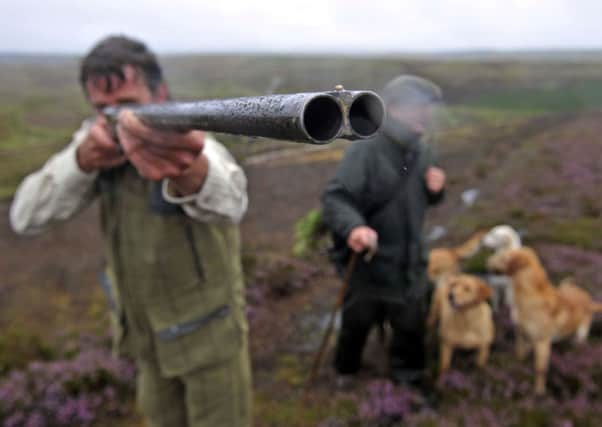Michael Fry: Latest land reform is doomed to fail


It is 100 years since the last great bout of land reform came to an effective end in Scotland, on the outbreak of the First World War
That bout had been largely brought about by antagonism to the lairds who owned the land, but they now redeemed themselves through recruiting regiments of their tenants which they led into battle against the Hun, often from the front. As a result, many did not come back from the war, and those that did had forged with their men such bonds in battle as made mere differences in proprietorship seem trivial.
Advertisement
Hide AdAdvertisement
Hide AdIn consequence, the land reforms introduced by the radical Liberal government in the years before 1914 petered out, and in fact some were reversed by later legislation. Their aim had been not just to screw the toffs but to undo the industrial revolution and restore a lost social harmony, to encourage the crowded masses of the cities to move out to a fresh and healthy life on the land.
To those with rose-tinted glasses it might have looked a coherent programme of reform but in the end it left the distribution of landownership in Scotland little changed, and so things have continued down to the present day. Now there may be a second great offensive over the same terrain, for which the outline is set forth in the report published yesterday by the Scottish Government’s Land Reform Review Group.
One thing has not altered much since 1914, which is that Scotland amounts to a sort of blend of Norway and Belgium, with picturesque but uninhabitable hills at each end and an overcrowded belt, still in some respects squalid, of condensed human settlement in the middle. To devise a single programme of reform for such disparate conditions is a challenge, as the review group has found.
To appreciate the difficulty, consider the case of what we used to call the Grampian region. At its top in terms of topography there are mountains which will always remain beautiful but barren, and at the bottom are various types of fertile farmland: the land use in either case is unlikely ever to change.
But in between lies a zone where there is a choice of use. Much of it at present is grouse moor, marked out in the landscape by the patchwork of muirburn, to my mind not an unattractive sight on a sunny day.
Moors like this make up 20 per cent of the entire area of Scotland, which may seem an excessive amount to abandon to chinless wonders with expensive shotguns. But the only real alternative is forestry, the inexorable spread of plantations of Sitka spruce, outwardly green though in fact black holes in which all other life vanishes.
Which would we rather have? It is a question over which reasonable men can differ, though I know what I prefer. The review group slightly cops out, pointing the reader to the Scottish Government’s aim of increasing national output of timber. The same government also wants to cover as much of the country as possible with wind farms. Whatever else may happen, the future of Scottish scenery seems bleak.
These purposes intersect with another, defined in the report as “a fairer, or wider and more equitable distribution of land in Scotland”. It proposes that, after thinking it over, the government should set a cap on the amount of the national territory that any individual can own.
Advertisement
Hide AdAdvertisement
Hide AdBut, again, how can this be intelligently applied over such an infinitely varied landscape? Three-quarters of Scotland is mountain, moor or rough grazing. Individual estates may sound impressive in terms of acreage, but in terms of income the numbers are usually negative (as the National Trust will tell you from its possession of tracts of beautiful wilderness). There are other parts of the world, the Australian outback or American Wild West, which are equally infertile, yet nobody there makes a fuss at their being owned in big lumps, because that is the only sensible way to own them.
If we want to find real inequity, perhaps we should look at the rental of Princes Street or Buchanan Street, which will exceed that of the county of Sutherland several times over and enrich their capitalist owners to an extent a noble family can only dream of. Is it all to be divided into equal shares, which would work out at 1.5 hectares for each of our five million? If so, I know where I want my hectare to be.
Altogether, this programme of land reform looks at bottom just as incoherent as its forerunner 100 years ago, and probably for the same reason: the mish-mash of intellectual confusion and social resentment among those, in politics and in the press, that provided the input to it.
I bet it meets the same fate as its forerunner 100 years ago too.